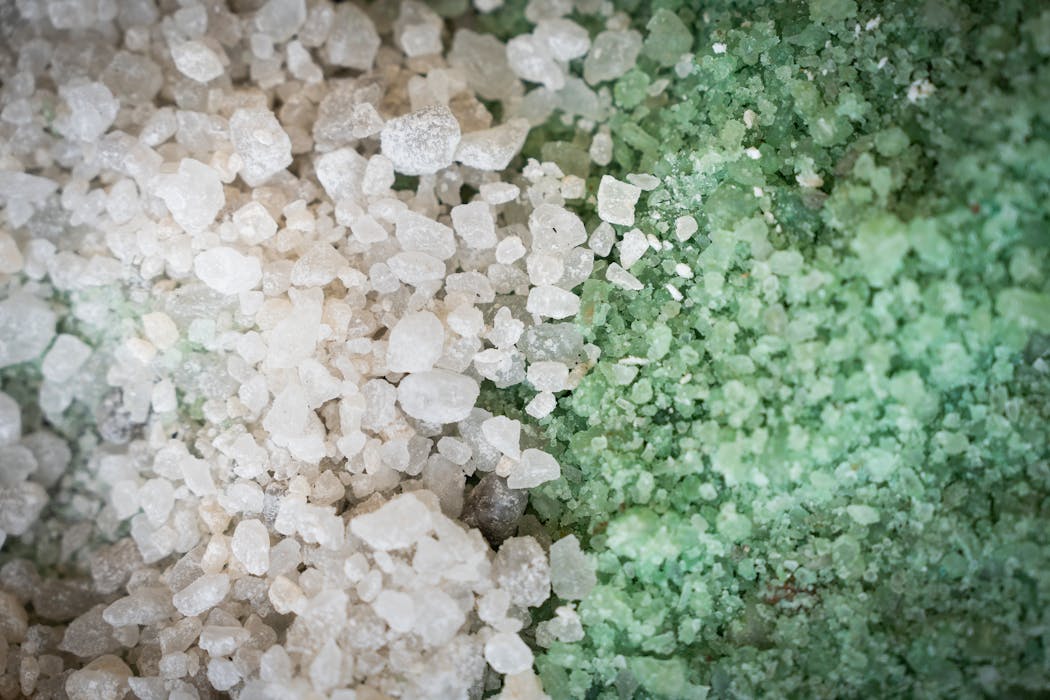Every year, Minnesota orders small mountains of road salt to spread on streets and highways when ice and snow hits, melting the way for traffic safety. But this winter, those piles barely have been touched.
In our record-breaking warm winter, what will happen with all that extra salt?
Most of it will get nicely tucked away, protected from rain and saved for next season, state road officials said.
"Obviously, we are not going to use all the salt," said Jed Falgren, maintenance engineer for the Minnesota Department of Transportation.
The state contracted to buy 590,000 tons of road salt for the season; 350,000 tons of which was meant for city and county governments and 240,000 tons for MnDOT, Falgren said.
So far, MnDOT has used less than 80,000 tons, Falgren said, compared to 200,000 tons this time last year.
As part of the state contract, MnDOT must purchase 80% of what it orders, meaning more salt is landing in MnDOT's hands whether it's used or not.
Unused salt gets stored in buildings at 150 trucking stations around the state, where it is covered by a roof and oftentimes tarps to prevent rain from mixing with it, Falgren said. Compared to other chemicals, road salt is considered inexpensive at about $95 a ton this season, he said.
Road salt has been shown to reduce collisions by up to 88% and injuries by 85%, according to the American Highway Users Alliance.
"It's the biggest reason we use salt anywhere: safety," Falgren said. "We just want it to be safer for drivers, for walkers."
But salting comes with environmental consequences, and MnDOT works closely with the Minnesota Pollution Control Agency (MPCA) to limit the negative impact road salt can have, Falgren said.
Salt runoff pollutes waterways with chloride, which is nearly impossible to remove, and can contaminate drinking water wells and reservoirs. Brooke Asleson, MPCA's chloride reduction program coordinator, said one teaspoon of road salt in a five gallon bucket of water is all it takes for the water to be dangerous for fish and insects. Impacts can include reproduction problems, stunted growth and strength and, for some species, death, she said.
MnDOT is working on expanding a program to mix salt with liquids to make a brine, Falgren said, resulting in less use of salt and a mixture that sticks to the road more quickly. Though the department is behind on its goals to move toward more brine use, Falgren said they are making progress.
"It's been about how we can keep the balance between keeping our roads safe but minimizing the damage we're having on the environment," Asleson said.
Residents also can reduce the amount of salt. MPCA started a training program for people to learn more about managing snow and ice. Through the training, MPCA has seen people lower their salt use anywhere from 30% to 70%, Asleson added.
MnDOT and MPCA meet every couple of months to talk about chloride reduction. Minnesota is leading the country in terms of its agencies' chloride reduction work, Asleson said.
"It's been really helpful the last few years since we've developed this true partnership and this spirit of wanting to work together because I think we're both going to be better off when we're collaborating," Asleson said.
Falgren said there are both positives and negatives to using road salt, and MnDOT aims to use it sparingly. "Our idea is to get the most bang out of the buck we put out."
Madison Roth is a University of Minnesota student reporter on assignment for the Star Tribune.
Carolyn Parnell, 'trailblazer' who served as Minnesota's first IT commissioner, dies


